Ramon Llull
A life in pictures1
Ramon Llull (c 1232-1315) was a teacher, a theologian and a philosopher, and most of all an avid debater. In one unique manuscript – Karlsruhe, Badische Landesbibliothek, St. Peter perg. 92 –, his person and biography come to life with extraordinary vividness: it opens as a picturebook of his adventures, full of detail and character. The book has the title Breviculum ex artibus Raimundi Lulli electum (A short selection from the Works of Ramon Llull). It was made after 1321, probably in Northern France. Twelve full-page miniatures paint the story of his life and teachings, or at least as they were imagined by the fourteenth-century artist. Here, on fol. 4r, we see Ramon Llull sitting on an elevated chair, teaching an attentive crowd. He discusses (in green letters) how to distinguish between right and false arguments and opinions.

https://nbn-resolving.de/urn:nbn:de:bsz:31-8765
Ramon Llull was born in Majorca, which was then Christian, but had been in Muslim hands for three centuries before. The island housed communities of Muslims, Jew and Christians. This shaped Ramon Llull and his works. In his twenties, Ramon worked as a tutor for James II of Aragon and lived a secular life. At the age of 30, however, he had a vision that made him change his life. He left his wife and children and set out on a pilgrimage to Rocamadour in the Dordogne, and Santiago of Compostella in Spain. Afterwards he returned to Majorca to study Arabic, and was deeply involved in the interreligious debates between Christians, Muslims and Jews. Several times he travelled to Spain and North Africa to convert Muslims and Jews, using reasoning and argumentation as his weapons.
Here on fol. 1v we see the vision of Christ on the cross Ramon had, and that would make him turn his life around. Note that in the image he is still dressed as a lay-man, and that he is writing down his vision on a scroll.
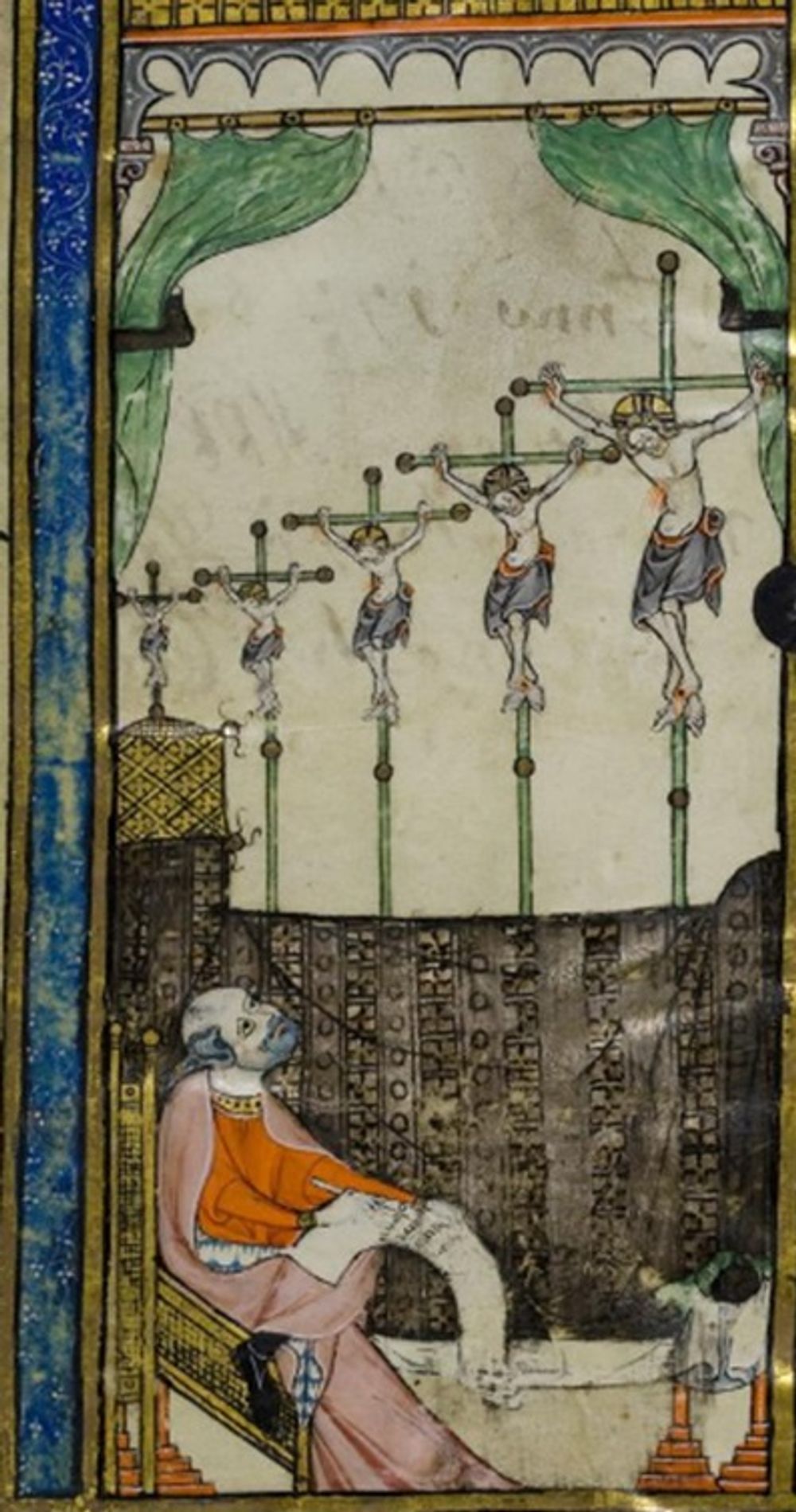
https://nbn-resolving.de/urn:nbn:de:bsz:31-8765
For nine years Ramon studied philosophy and theology in both Latin and Arabic. His familiarity with Arabic logical works by Al-Ghazzali and other Arab philosophers deeply influenced his own philosophy and theology. Theology was, for him, a science, for which mathematical deduction was the ideal method of reasoning. His best known work is his Ars generalis ultima or Ars magna (The Ultimate General Art or The Great Art, published in 1305). In this work, logic and reasoning are used to convince Muslims of the truth of Christian faith. The whole art is deeply analytical, using visual aids and charts to combine ideas, test their soundness and to generate new conclusions.
Here we see how Ramon Llull (on the left) disputes with his Arab servant (on the right), who taught him Arabic. Note the writing on the leaves standing on the lectern: it is supposed to represent Arabic script.
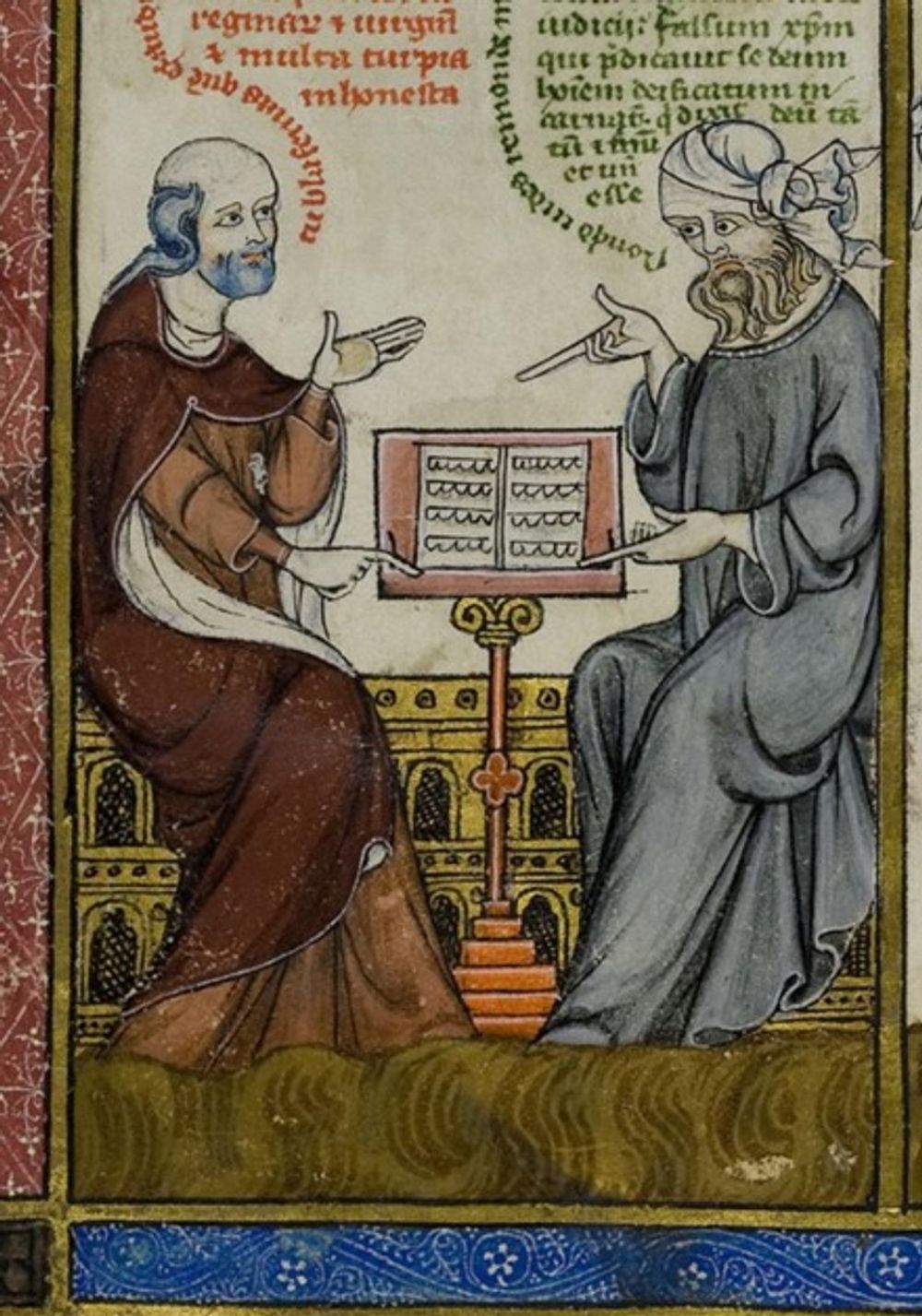
https://nbn-resolving.de/urn:nbn:de:bsz:31-8765
This page aptly illustrates the schematic reasoning of Ramon Llull: a position leads to several options, which then lead to several conclusions and, ultimately, solutions of a problem.


https://nbn-resolving.de/urn:nbn:de:bsz:31-8765
On fol. 5r, we see a visualisation of Ramon Llull teaching his art. On the left are nine wise men asking him questiones. These are closely linked to the Aristotelian categories: utrum, quid, de quo, quare, etcetera. These questions lead to answers that can be categorized according to the labels in the ladder: categories of being ranging from deus to homo and vegetativa elementativa.
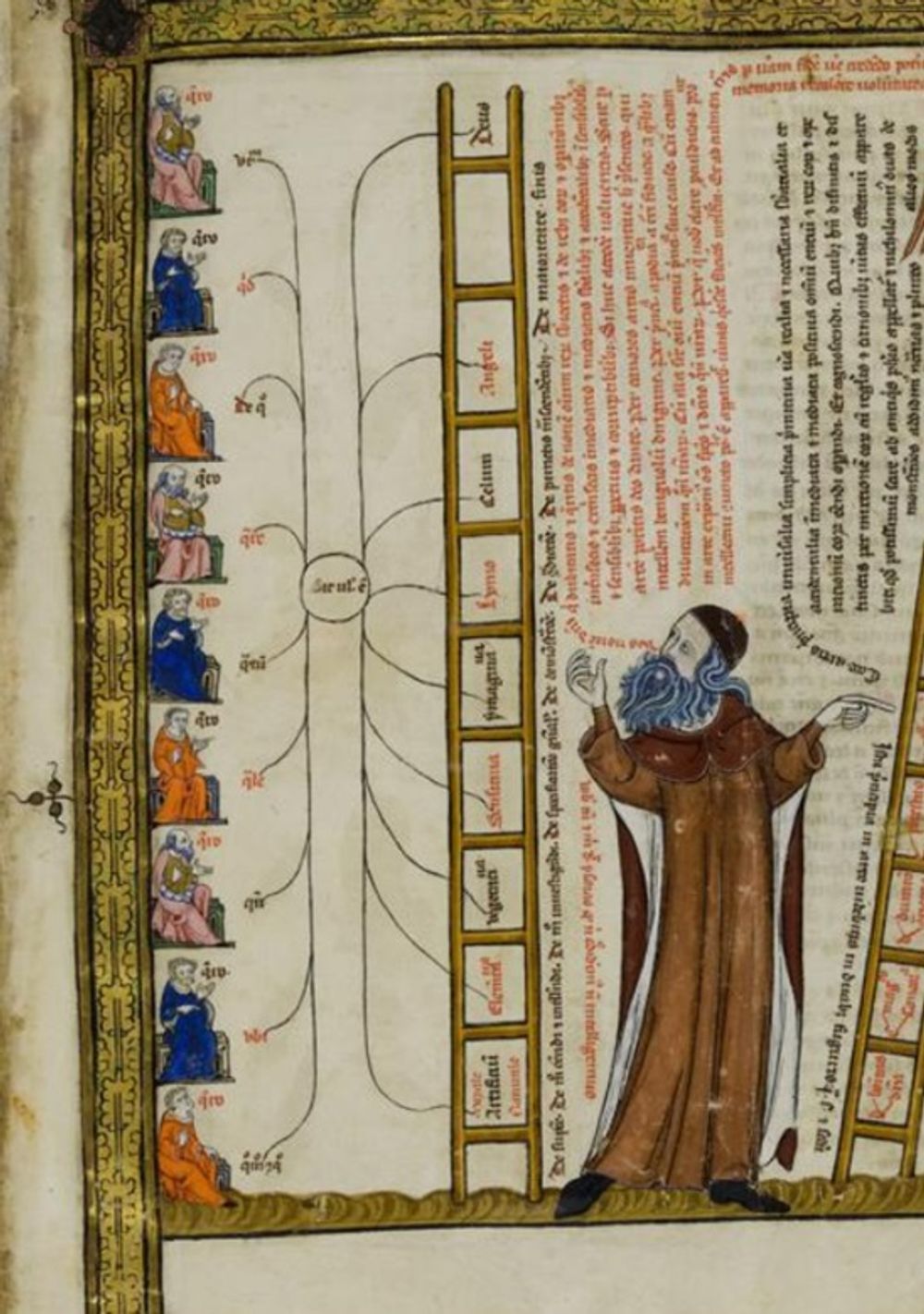
https://nbn-resolving.de/urn:nbn:de:bsz:31-8765
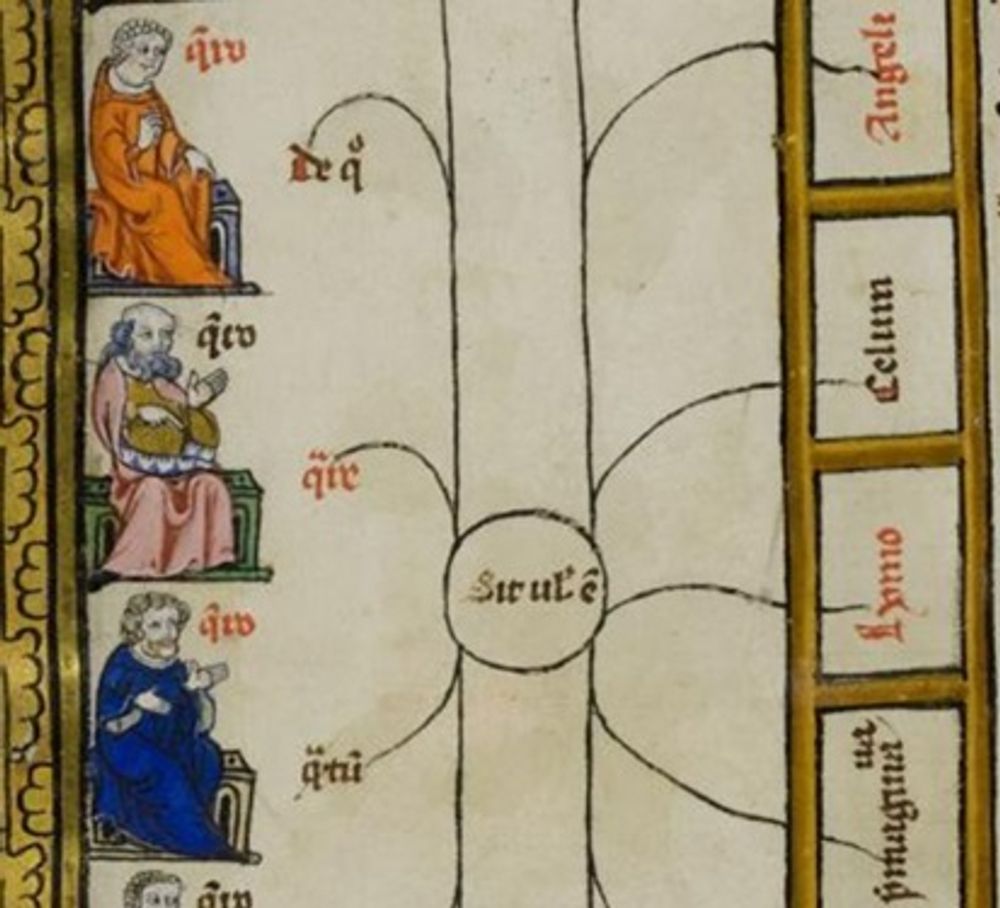
https://nbn-resolving.de/urn:nbn:de:bsz:31-8765
Ramon Llull’s rhetoric is one of battle and war. On ff. 6v- 7r he is pictured as part of an army: the “exercitus Aristotelis ad destruendum turrim falsitatis cum suo commentatore”, “the army of Aristotle to destroy the tower of falsehood with his commentary”.
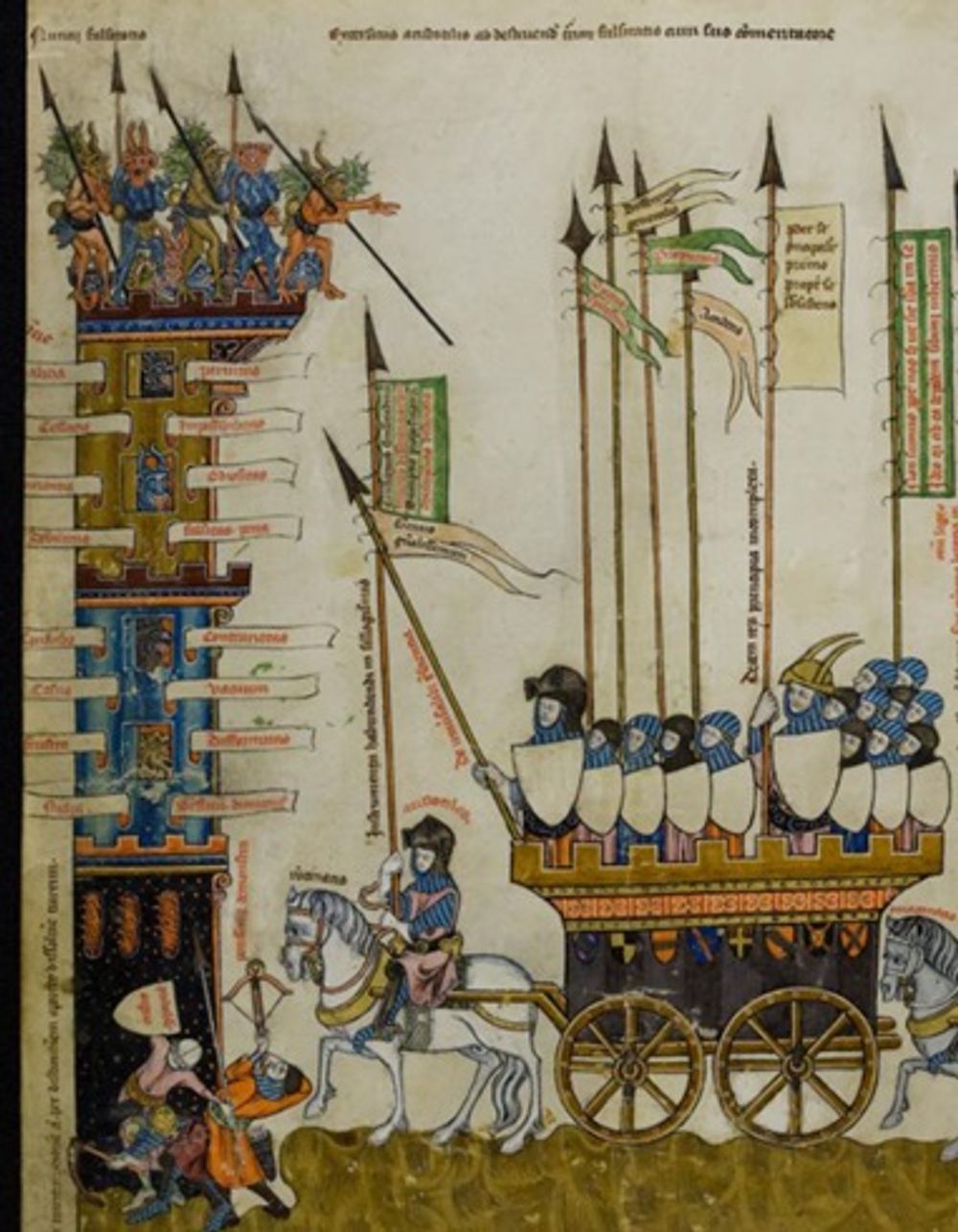
https://nbn-resolving.de/urn:nbn:de:bsz:31-8765
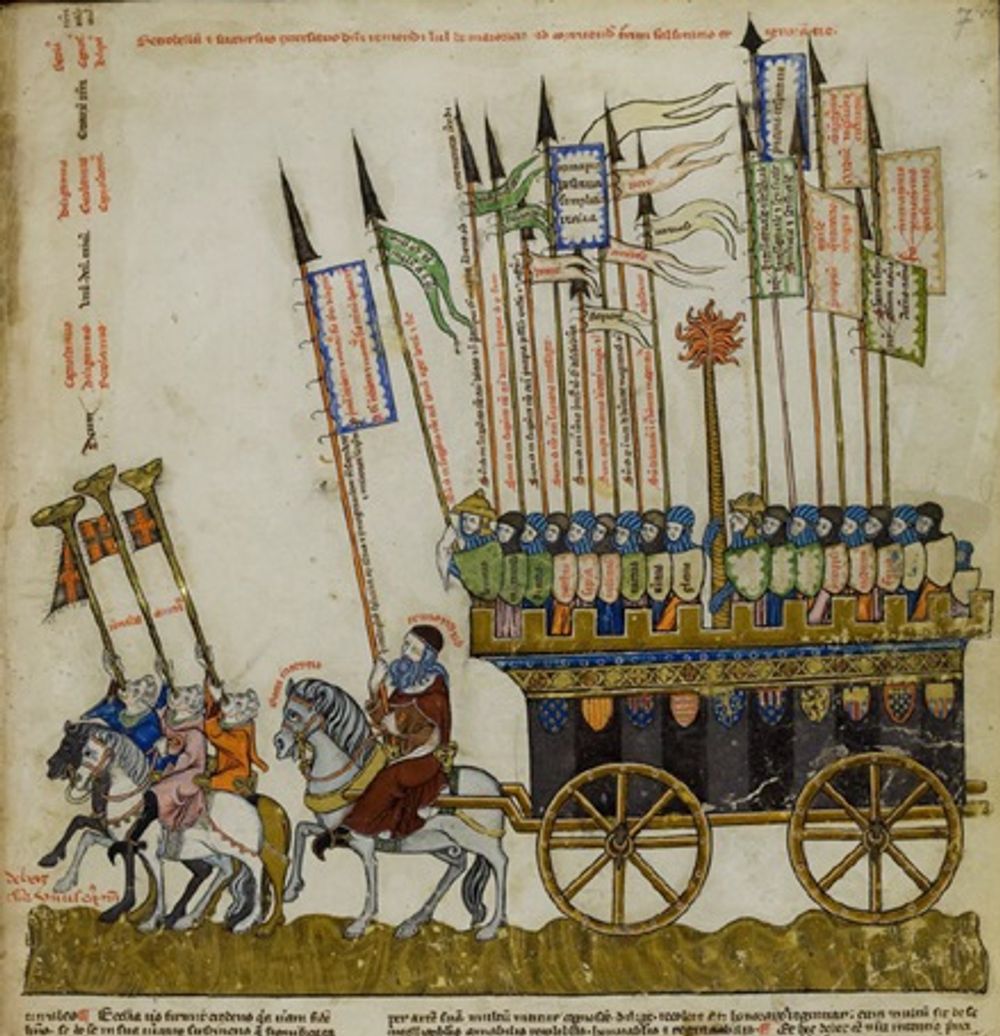
https://nbn-resolving.de/urn:nbn:de:bsz:31-8765
The army is led by Aristotle, riding his horse ‘Ratiocinatio’ (reasoning). The Arab philosopher Averroes follows, on his horse ‘Ymaginatio’ (imagination).

https://nbn-resolving.de/urn:nbn:de:bsz:31-8765
In the tower of falsehood rhetorical and dialectical sins are found, such as ignorance, confusion, impossibility, emptiness. Truth is held capture in the dungeon.
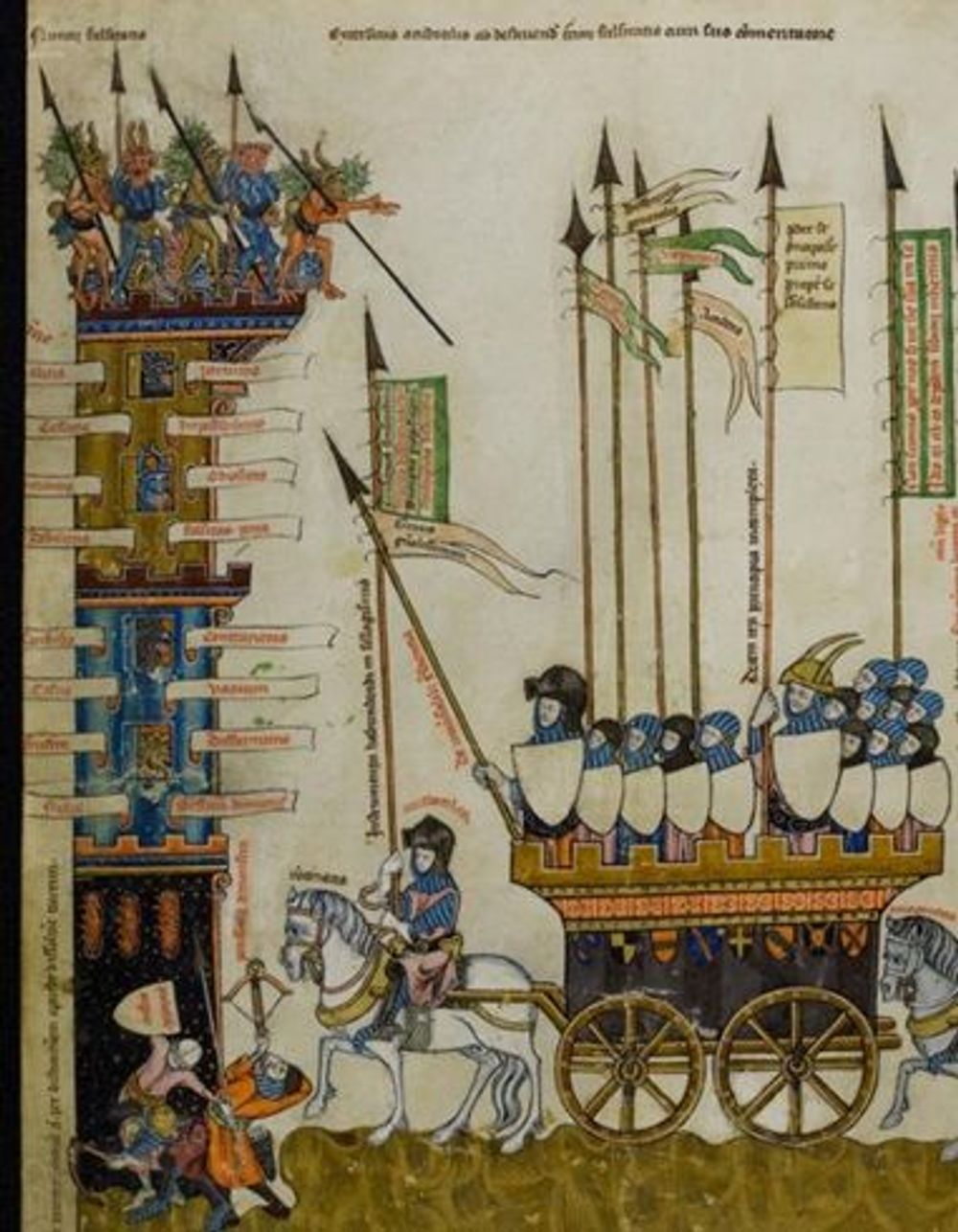

https://nbn-resolving.de/urn:nbn:de:bsz:31-8765
Ramon Lull pulls a chariot with eighteen principles of the art of arguing well: among them are goodness, greatness, wisdom, endurance, etc.
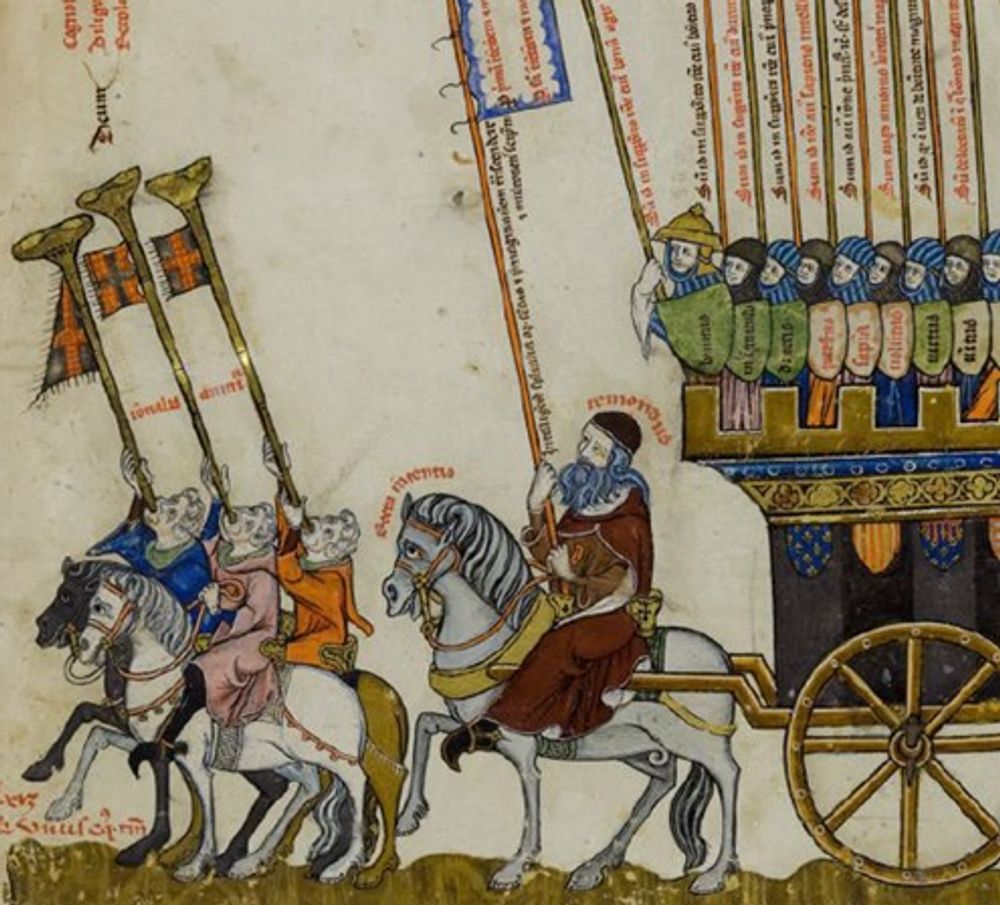
https://nbn-resolving.de/urn:nbn:de:bsz:31-8765
Ramon Llull and his Ars magna (1305)
In his Ars magna, Ramon Llull presents schematic visualisations of Aristotelian logic: in every field, he assumed, there is a number of basic statements that are universally embraced as true. From these, all derivative statements could be calculated as possible ways of finding further truths. The result is a kind of logical machine, that guides the user from one statement of truth to a host of other possible (and probable) ones. The connections are visualised in schemes with lines going from node to node in networks of nodes, resulting in quite complicated geometrical shapes. Using a wheel to explore combinations was not new, but Ramon Llull developed the method to a new extreme, which inspired generations of new logical thinkers.
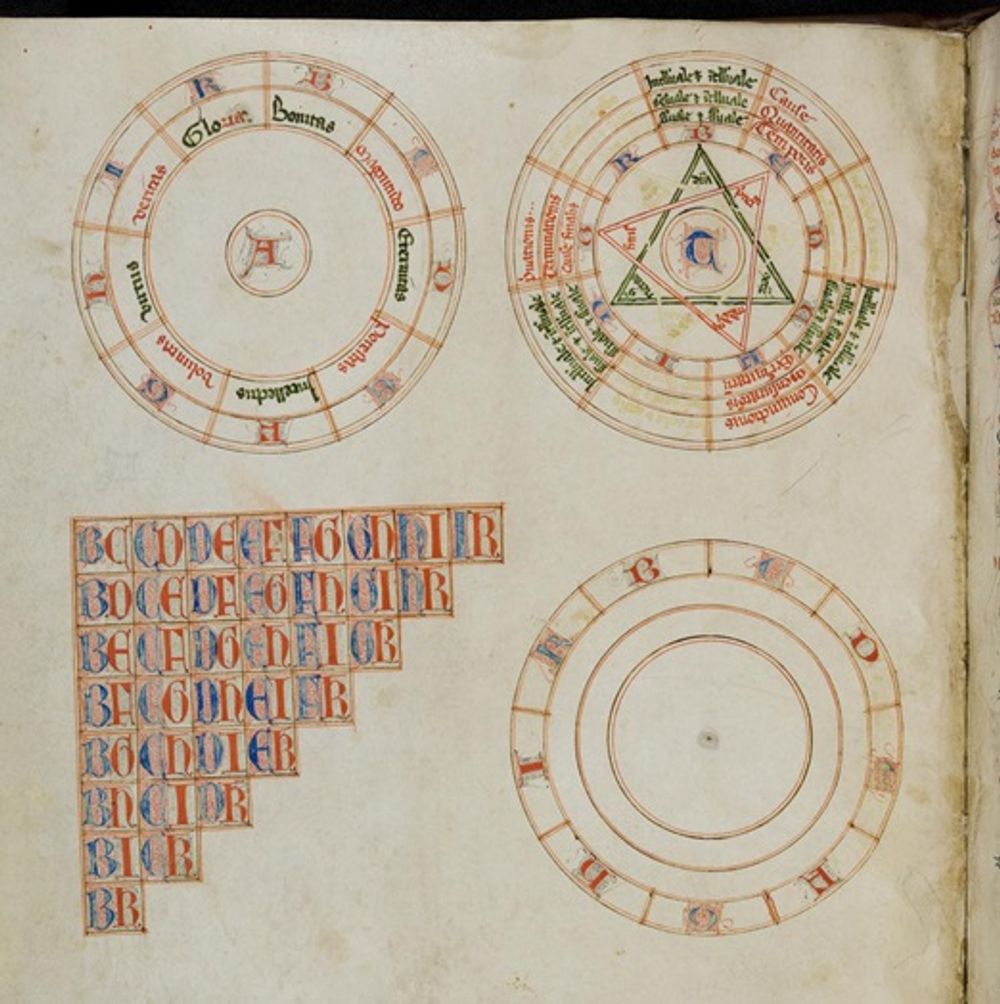
https://nbn-resolving.de/urn:nbn:de:bsz:31-8765
Sources used for this contribution:
- Digitisation, full description and bibliography at the site of the Badische Landesbibliothek Karlsruhe: https://digital.blb-karlsruhe.de/blbhs/content/titleinfo/98159
- J.N. Hillgarth, Ramon Llull and Lullism in fourteenth-century France, Oxford: Clarendon Press, 1971
- A. Fidora and J.E. Rubio [Albarracín] (eds.), Raimundus Lullus: An Introduction to His Life, Works and Thought, Turnhout: Brepols, 2008
- Priani, Ernesto, "Ramon Llull", The Stanford Encyclopedia of Philosophy (Spring 2017 Edition), Edward N. Zalta (ed.), URL = <https://plato.stanford.edu/archives/spr2017/entries/llull/>
- Video of a recent exhibition in ZKM - Karlsruhe Centre for Art and Media: https://www.youtube.com/watch?v=fK-ovO_1j8I
Contribution by Mariken Teeuwen in collaboration with Renée Schilling.
Cite as, Mariken Teeuwen and Renée Schilling, “Ramon Llull”, The art of reasoning in medieval manuscripts (Dec 2020), https://art-of-reasoning.huygens.knaw.nl/ramon. ↑


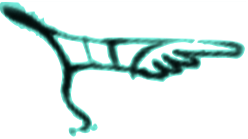 Next Read:
Next Read: